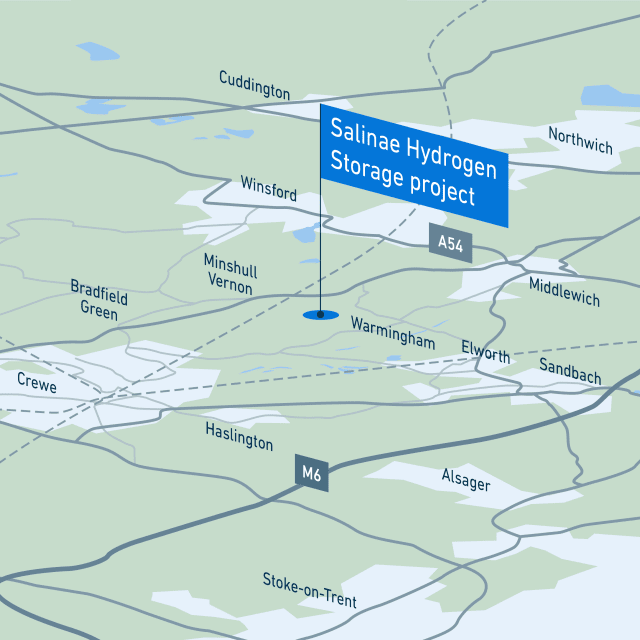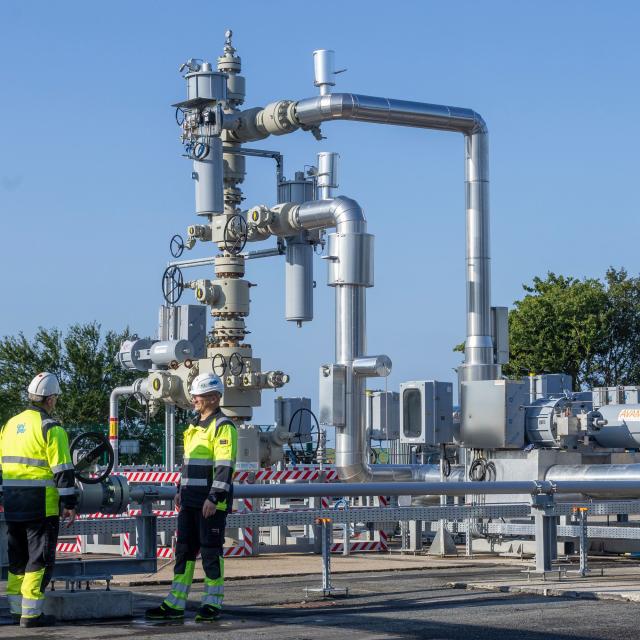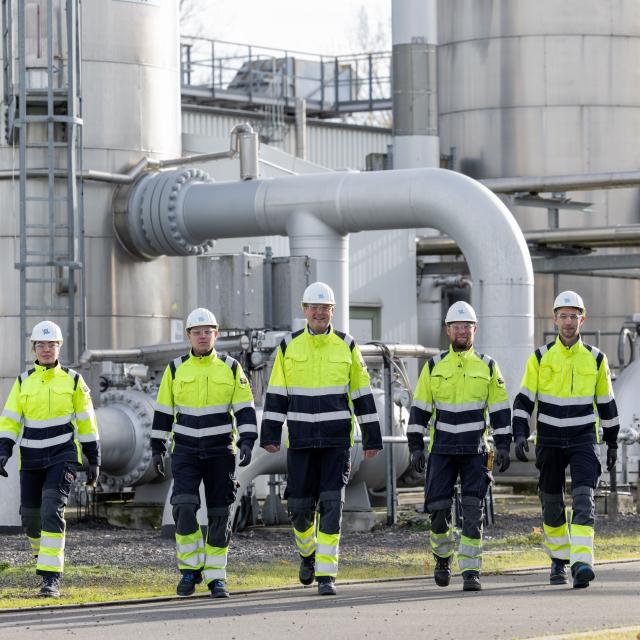
Hydrogen Storage
H2 as a future energy source
Hydrogen will increasingly play a decisive role in the energy transition. We are driving the development of salt caverns for underground hydrogen storage in northwestern Germany and investigating hydrogen blending in porous reservoirs in southern Germany.
The first commercial hydrogen storage facility is expected to be operational at our storage site in Krummhörn with a minimum working gas capacity of 200 GWh by the end of 2036. The HPC (Hydrogen Pilot Cavern) Krummhörn pilot project will provide us with conclusive results by 2028, which will be of significant benefit for the implementation of further commercial hydrogen storage facilities.
Current projects
The storage of pure hydrogen in cavern storage is technically feasible and very efficient due to the rapid feed-in and withdrawal, i.e. H. they can compensate for short-term fluctuations in demand. Pore storage, which occurs primarily in southern Germany and requires individual consideration, has high volumes that can be used for seasonal storage. That's why we're currently running test projects in both types of storage. Below you will find further information about our current hydrogen storage projects.
Learn more about hydrogen storage
Find out more about the diverse and innovative possibilities of underground hydrogen storage in this informative interview between Kevin O'Donovan and Christian Kosack, Manager Storage Intergrity Systems at Uniper. Among other things, the discussion focuses on the innovative HPC project (Hydrogen Pilot Cavern Krummhörn) in northern Germany, which impresses with its pioneering work in the field of hydrogen caverns, as well as hydrogen storage options in porous rock formations in southern Germany. In addition, it will discuss why the much-needed technology for these storage options is not yet fully available and what ambitious steps are being taken to overcome these challenges in the future.







